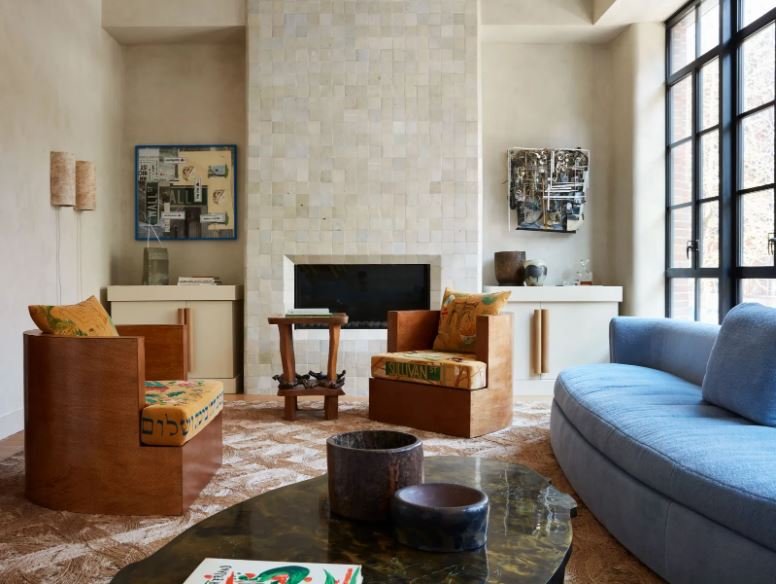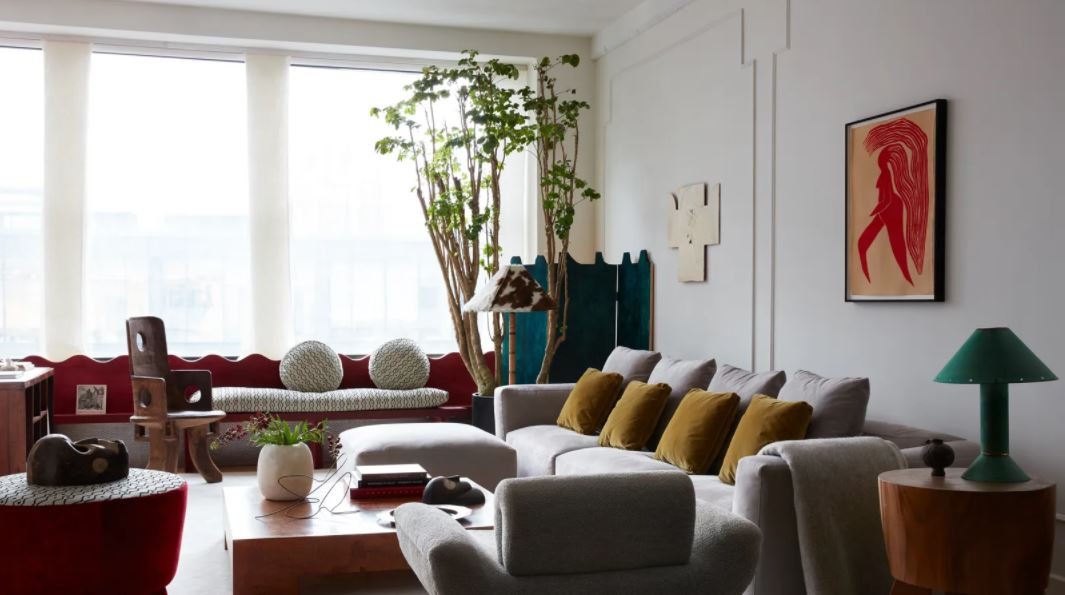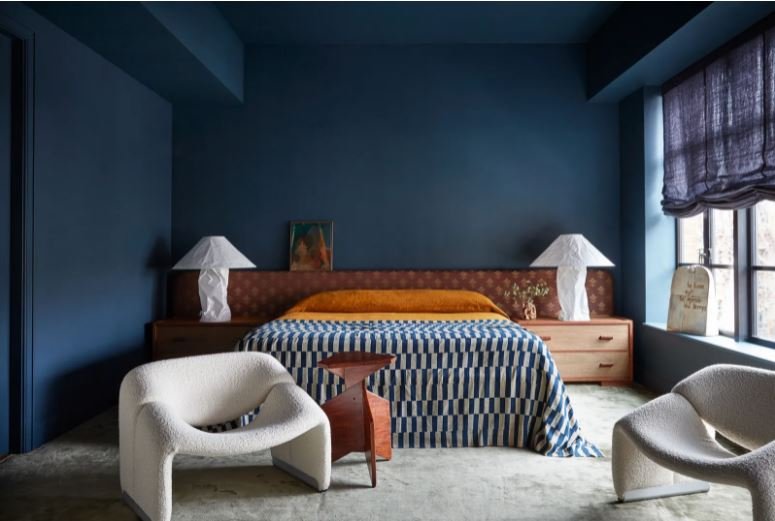How Introverts vs Extroverts should Style their Home
It’s the constant comparison. The most popular as well as potentially the most misunderstood personality trait - are you an introvert or an extrovert? Clearly, we don’t enjoy the labels in today’s world, since it feels like nearly all of us now call ourselves ambiverts.
And I can’t blame you if you feel that way. Who wants to be called shy, or loud, or indecisive, or needy? Obviously, these caricaturistic traits are far too extreme and one-dimensional to describe any person authentically. Online tests make introverts sound like antisocial weirdos and play extroverts as direct and self-centered partiers. Why then, do we still use these terms? Why are we able to still easily categorize friends and family as either introvert-leaning or extrovert-leaning? There’s clearly something significant to this differentiation in personality.
Personality is a big interest of mine, and after consuming article after article, I’ve come to boil down my understanding of this spectrum to one simple factor: one’s sensitivity to environmental stimulation. It’s been found that introvert-leaning people are more sensitive to dopamine (the reward and pleasure hormone) than the extrovert-leaning. This means that a little can go a longer way; they can be satisfied with less, but then may also get overwhelmed with too much, in comparison to more extroverted folks.
Of course this is all on a spectrum. It’s hard to categorize ourselves when we’re always in comparison with the people around us. That’s why I want to use the terms extrovert-leaning and introvert-leaning. You can be more sensitive to your environment than some, and less so than others. Here’s some situations to consider if you’re looking to roughly gauge where you are from the middle:
Do you prefer to work in silence or with low-volume instrumental music when working (introvert-leaning, or “I”), or do you play music with vocals to help you focus (extrovert-leaning, or “E”)?
When making an important decision, do you keep your situation within your few, most-trusted friends (I), or do you discuss your thoughts with others, even if you’re not intending to take their advice (E)?
Assuming you took 20 minutes before an interview to prep answers to common interview questions, will you roughly stick to your prepared answers (I), or do you tend to deviate and recall new stories to tell in the spur of the moment (E)?
Imagine 5 of your business partners text/ call you with a different work request at roughly the same time. Would you feel stress simply from the inflow of incoming messages carrying another task? (Yes = I, No = E)
When hosting a party, do you enjoy mixing friend groups (work, school, hobbies, family, etc.) and inviting everyone (E), or is your guest list mostly kept to an existing friend group, hosting them one at a time (I)?
In conversation, do you tend to pay more attention to the flow of the conversation (E), or how the other person is reacting (I)?
While introvert-leaning people reach overwhelm quicker given their higher sensitivity to dopamine, extrovert-leaning folks can experience underwhelm, or the experience of “not enough”. Not enough variation, not enough interest, not enough challenge. In short, not enough stimulation. Feelings of restlessness, frustration, being stuck, lack of focus, or pointlessness can come up with underwhelm. It can be equally uncomfortable as the better-known feeling of overwhelm, which is when we need to process more input than we’re capable of at the time, and need to remove stimulation in order for our system to catch up.
No one should have to experience either overwhelm or underwhelm in their interior design. How awful to be put off by the wallpaper you come home to each and every day! Now that you’re feeling confident about your lean, let’s turn this knowledge into inspiration for your dream home. Generally speaking, extrovert-leaning people will look for greater energy, variation, and stimulation in their environment to feel fulfilled, simply because they don’t get the same kick out of each piece of input. Introvert-leaning people then will appreciate their personal goldilocks-level of stimulation that is both interesting, yet on the calmer side of things. Let’s dive in:
Vibrant colors
Muted colors
Colors:
Extrovert-leaning: To provide proper stimulation, include vibrant colors (higher saturation). Vibrancy is communicated to humans as energetic more so than “warm” vs “cool” colors, so go for blues and greens if you want, but let them pop!
Introvert-leaning: Similar to the above advice for extrovert-leaning, I’m not going to limit you to any set of hues! Feel free to add yellow, purple, red, or green. Instead, look for muted shades of your color, which keeps the visual interest without taking too much of your attention.
Color Schemes:
Extrovert-leaning: Push for stark contrast in colors. Classic black and white is your friend, and so are opposite colors on the color wheel (like blue and orange, or red and green).
Introvert-leaning: Create contrast with blue and grey, rather than black and white. Explore monochrome (same color) or analogous (similar colors, like all warm or all cool) palettes. If and when you get out of your comfort zone and go bold, bring in some neutral colors like beige, white, or grey to balance out the vibe.
Pattern:
Extrovert-leaning: Add pattern to your space with pillows, wallpaper, throws, decorative vases, or even in your upholstery. Mixing patterns can be tricky to get right, but it’ll be well worth it for you. Look for patterns of different scales, and explore the small-scale like paisley, houndstooth, or tight florals. Is it busy or is it beautiful?
Introvert-leaning: Search for larger-scale patterns to add interest to your space. Mural wallpaper is really hot right now and is exactly up your alley. Plaids, windowpane, argyle, or pinstripes will look and feel great.
For some visual inspiration, click through these photos which I categorized as design great for either introvert-leaning or extrovert-leaning. Pay attention to the elements mentioned above as well as the overall feel.
To me, all of these photos look incredible, and even desirable in some ways; they’re well-designed rooms. But in your home, it’s not just about what attracts you, it’s about what will make you happy day in and day out, over and over again. It’s what will nourish and inspire you as a unique and individual person. Also, I would say these photos may be tailored to the more extreme -leaning folks, so if you jive with the vibe but not that much, take these as inspiration and not an instruction manual.
EXTROVERT-LEANING ROOMS:
INTROVERT-LEANING ROOMS:
I’d love to know if you got inspiration or if this resonates with you and what you like, or if you learned anything new about yourself today.























